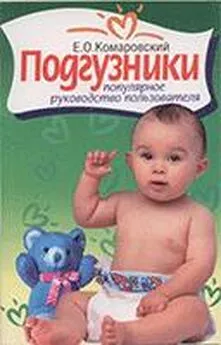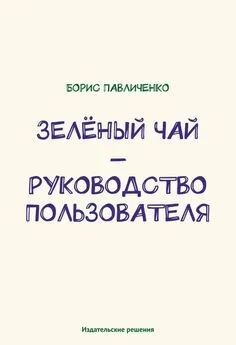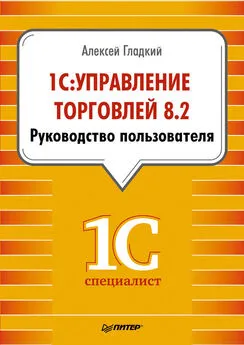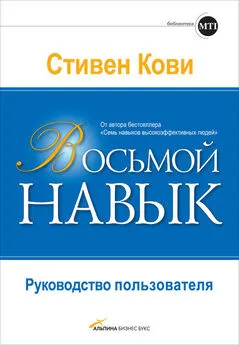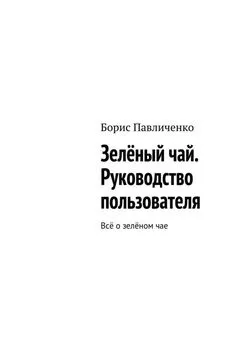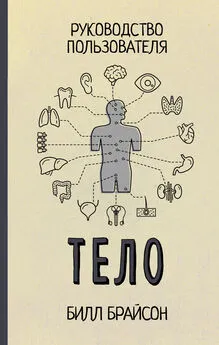Кристи Фанк - Грудь. Руководство пользователя [litres]
- Название:Грудь. Руководство пользователя [litres]
- Автор:
- Жанр:
- Издательство:Литагент 5 редакция «БОМБОРА»
- Год:2020
- Город:Москва
- ISBN:978-5-04-108737-1
- Рейтинг:
- Избранное:Добавить в избранное
-
Отзывы:
-
Ваша оценка:
Кристи Фанк - Грудь. Руководство пользователя [litres] краткое содержание
Грудь. Руководство пользователя [litres] - читать онлайн бесплатно ознакомительный отрывок
Интервал:
Закладка:
220
Hormones, the Endogenous, and Breast Cancer Collaborative Group, “Insulin-Like Growth Factor 1 (IGF1), IGF Binding Protein 3 (IGFBP3), and Breast Cancer Risk: Pooled Individual Data Analysis of 17 Prospective Studies,” The Lancet Oncology 11, no. 6 (2010): 530–542.
221
R. J. Barnard et al., “Effects of a Low-Fat, High-Fiber Diet and Exercise Program on Breast Cancer Risk Factors In Vivo and Tumor Cell Growth and Apoptosis In Vitro,” Nutrition and Cancer 55, no. 1 (2006): 28–34.
222
R. J. Barnard et al., “A Low-Fat Diet and/or Strenuous Exercise Alters the IGF Axis In Vivo and Reduces Prostate Tumor Cell Growth In Vitro,” The Prostate 56, no. 3 (2003): 201–206.
223
N. E. Allen et al., “The Associations of Diet with Serum Insulin-Like Growth Factor 1 and Its Main Binding Proteins in 292 Women Meat-eaters, Vegetarians, and Vegans,” Cancer Epidemiology and Prevention Biomarkers 11, no. 11 (2002): 1441–1448.
224
S. E. Steck et al., “Cooked Meat and Risk of Breast Cancer: Lifetime versus Recent Dietary Intake,” Epidemiology 18, no. 3 (May 2007): 373–382.
225
R. Zaidi, S. Kumar, and P. R. Rawat, “Rapid Detection and Quantification of Dietary Mutagens in Food Using Mass Spectrometry and Ultra Performance Liquid Chromatography,” Food Chemistry 135, no. 4 (2012): 2897–2903.
226
H. P. Thiebaud et al., “Airborne Mutagens Produced by Frying Beef, Pork and a Soy-based Food,” Food and Chemical Toxicology 33, no. 10 (1995): 821–828.
227
W. Zheng et al., “Well-Done Meat Intake and the Risk of Breast Cancer,” Journal of the National Cancer Institute 90, no. 22 (November 1998): 1724–1729.
228
S. N. Lauber, S. Ali, and N. J. Gooderham, “The Cooked Food Derived Carcinogen 2-amino-1-methyl-6-phenylimidazo [4, 5-b] Pyridine Is a Potent Oestrogen: A Mechanistic Basis for Its Tissue-Specific Carcinogenicity,” Carcinogenesis 25, no. 12 (2004): 2509–2517.
229
L. S. DeBruin, P. A. Martos, and P. D. Josephy, “Detection of PhIP (2-amino-1-methyl-6-phenylimidazo [4, 5-b] Pyridine) in the Milk of Healthy Women,” Chemical Research in Toxicology 14, no. 11 (2001): 1523–1528.
230
R. D. Holland et al., “Formation of a Mutagenic Heterocyclic Aromatic Amine from Creatinine in Urine of Meat Eaters and Vegetarians,” Chemical Research in Toxicology 18, no. 3 (2005): 579–590.
231
S. Murray et al., “Effect of Cruciferous Vegetable Consumption on Heterocyclic Aromatic Amine Metabolism in Man,” Carcinogenesis 22, no. 9 (2001): 1413–1420.
232
H. A. J. Schut and R. Yao, “Tea as a Potential Chemopreventive Agent in PhIP Carcinogenesis: Effects of Green Tea and Black Tea on PhIP-DNA Adduct Formation in Female F-344 Rats,” Nutrition and Cancer 36, no. 1 (2000): 52–58.
233
T. P. Robinson et al., “Mapping the Global Distribution of Livestock,” PloS One 9, no. 5 (2014): e96084, открыто 3 декабря 2017 года, https://doi.org/10.1371/journal.pone.0096084.
234
USDA, USDA Climate Change Science Plan 4, 2010, http://www.usda.gov/oce/climate_change/science_plan2010/USDA_CCSPlan_120810.pdf.
235
P. Ross, “Cow Farts Have ‘Larger Greenhouse Gas Impact’ Than Previously Thought; Methane Pushes Climate Change,” International Business Times , November 26, 2013, http://www.ibtimes.com/cow-farts-have-larger-greenhouse-gas-impactpreviously-thought-methane-pushes-climate-change-1487502.
236
USDA Economic Research Service, “How Important Is Irrigation to US Agriculture?” October 12, 2016, https://www.ers.usda.gov/topicsfarm-practices-management/irrigation-water-use/background.
237
EPA, “Draft Plan to Study the Potential Impacts of Hydraulic Fracturing on Drinking Water Resources,” February 2011, http://www2.epa.gov/sites/production/files/documents/HFStudyPlanDraft_SAB_020711.pdf.
238
D. Pimentel et al., “Water Resources: Agricultural and Environmental Issues,” BioScience 54 (2004): 909, 911.
239
M. M. Mekonnen and A. Y. Hoekstra, “A Global Assessment of the Water Footprint of Farm Animal Products,” Ecosystems 15 (2012): 401–415.
240
P. Thornton, M. Herrero, and P. Ericksen, “Livestock and Climate Change,” Livestock exchange 3 (November 2011).
241
S. Margulis, Causes of Deforestation of the Brazilian Amazon (The World Bank, 2004), http://www-wds.worldbank.org/servlet/WDSContentServer/WDSP/IB/2004/02/02/000090341_20040202130625/Rendered/PDF/ 277150PAPER0wbwp0no1022.pdf.
242
R. Oppenlander, “The World Hunger-Food Choice Connection: A Summary,” Comfortably Unaware (блог) , April 22, 2012, http://comfortablyunaware.com/blog/the-world-hunger-food-choice-connection-a-summary/; United Nations Children’s Fund, Improving Child Nutrition: The Achievable Imperative for Global Progress (New York: UNICEF, 2013).
243
“General Situation of World Fish Stocks,” Food and Agricultural Organization of the United Nations, открыто 26 декабря 2007 года, http://www.fao.org/newsroom/common/ecg/1000505/en/stocks.pdf.
244
Annenberg Learner, “Unit 9: Biodiversity Decline, Section 7: Habitat Loss-Causes and Consequences,” The Habitable Planet multimedia course, открыто 26 декабря 2007 года, https://www.learner.org/courses/envsci/unit/text.php?unit=9&secNum=7.
245
R. Maughan, “Wedge Wolf Pack Will Be Killed because of Its Increasing Beef Consumption,” The Wildlife News , September 28, 2012, http://www.thewildlifenews.com/2012/09/22/wedge-wolf-pack-will-be-killed-because-of-increasing-beef-consumption.
246
D. Tilman and M. Clark, “Global Diets Link Environmental Sustainability and Human Health,” Nature 515, no. 7528 (November 2014): 518–522.
247
E. F. Taylor et al., “Meat Consumption and Risk of Breast Cancer in the UK Women’s Cohort Study,” British Journal of Cancer 96, no. 7 (2007): 1139.
248
D. D. Alexander et al., “A Review and Meta-analysis of Red and Processed Meat Consumption and Breast Cancer,” Nutrition Research Reviews 23, no. 2 (2010): 349–365.
249
V. Bouvard et al., “Carcinogenicity of Consumption of Red and Processed Meat,” The Lancet Oncology 16, no. 16 (2015): 1599.
250
M. Inoue‐Choi et al., “Red and Processed Meat, Nitrite, and Heme Iron Intakes and Postmenopausal Breast Cancer Risk in the NIH‐AARP Diet and Health Study,” International Journal of Cancer 138, no. 7 (2016): 1609–1618.
251
“Animal Foods,” World Cancer Research Fund International, открыто 14 октября 2017 года, http://www.wcrf.org/int/research-we-fund/cancer-prevention-recommendations/ animal-foods.
252
R. Sinha et al., “Meat Intake and Mortality: A Prospective Study of over Half a Million People,” Archives of Internal Medicine 169, no. 6 (2009): 562–571; S. Rohrmann et al., “Meat Consumption and Mortality: Results from the European Prospective Investigation into Cancer and Nutrition,” BMC Medicine 11, no. 1 (2013): 63.
253
A. J. Cross et al., “A Prospective Study of Red and Processed Meat Intake in Relation to Cancer Risk,” PLoS Medicine 4, no. 12 (December 2007): e325.
254
H. Davoodi, S. Esmaeili, and A. M. Mortazavian, “Effects of Milk and Milk Products Consumption on Cancer: A Review,” Comprehensive Reviews in Food Science and Food Safety 12, no. 3 (2013): 249–264.
255
P. W. Parodi, “Dairy Product Consumption and the Risk of Breast Cancer,” Journal of the American College of Nutrition 24, no. 6 (December 2005): 556S–568S; W. Al Sarakbi, M. Salhab and K. Mokbel, “Dairy Products and Breast Cancer Risk: A Review of the Literature,” International Journal of Fertility and Women’s Medicine 50, no. 6 (November – December 2005): 244–249; P. G. Moorman and P. D. Terry, “Consumption of Dairy Products and the Risk of Breast Cancer: A Review of the Literature,” American Journal of Clinical Nutrition 80, no. 1 (July 2004): 5–14; M. H. Shin et al., “Intake of Dairy Products, Calcium, and Vitamin D and Risk of Breast Cancer,” Journal of the National Cancer Institute 94, no. 17 (September 2002): 1301–1311.
256
H. Davoodi, S. Esmaeili, and A. M. Mortazavian, “Effects of Milk and Milk Products Consumption on Cancer: A Review,” Comprehensive Reviews in Food Science and Food Safety 12, no. 3 (2013): 249–264.
257
M. H. Shin et al., “Intake of Dairy Products, Calcium, and Vitamin D and Risk of Breast Cancer,” Journal of the National Cancer Institute 94, no. 17 (2002): 1301–1310.
258
C. H. Kroenke et al., “High-and Low-Fat Dairy Intake, Recurrence, and Mortality after Breast Cancer Diagnosis,” Journal of the National Cancer Institute 105, no. 9 (2013): 616–623.
259
D. Ganmaa and A. Sato, “The Possible Role of Female Sex Hormones in Milk from Pregnant Cows in the Development of Breast, Ovarian and Corpus Uteri Cancers,” Medical Hypotheses 65, no. 6 (2005): 1028–1037.
260
D. A. Pape-Zambito, R. F. Roberts, and R. S. Kensinger, “Estrone and 17κ-estradiol Concentrations in Pasteurized-Homogenized Milk and Commercial Dairy Products,” Journal of Dairy Science 93, no. 6 (2010): 2533–2540.
261
S. Stender and J. Dyerberg, “Influence of Trans Fatty Acids on Health,” Annals of Nutrition and Metabolism 48, no. 2 (2004): 61–66.
262
A. Trichopoulou et al., “Consumption of Olive Oil and Specific Food Groups in Relation to Breast Cancer Risk in Greece,” Journal of the National Cancer Institute 87, no. 2 (1995): 110–116.
263
J. R. Hebert, T. G. Hurley, and Y. Ma, “The Effect of Dietary Exposures on Recurrence and Mortality in Early Stage Breast Cancer,” Breast Cancer Research and Treatment 51, no. 1 (September 1998): 17–28; A. J. McEligot et al., “Dietary Fat, Fiber, Vegetable, and Micronutrients Are Associated with Overall Survival in Postmenopausal Women Diagnosed with Breast Cancer,” Nutrition and Cancer 55, no. 2 (2006): 132–140.
264
D. Doell et al., “Updated Estimate of Trans Fat Intake by the US Population,” Food Additives and Contaminants: Part A 29, no. 6 (2012): 861–874.
Читать дальшеИнтервал:
Закладка:
![Обложка книги Кристи Фанк - Грудь. Руководство пользователя [litres]](/books/1062698/kristi-fank-grud-rukovodstvo-polzovatelya-litre.webp)
